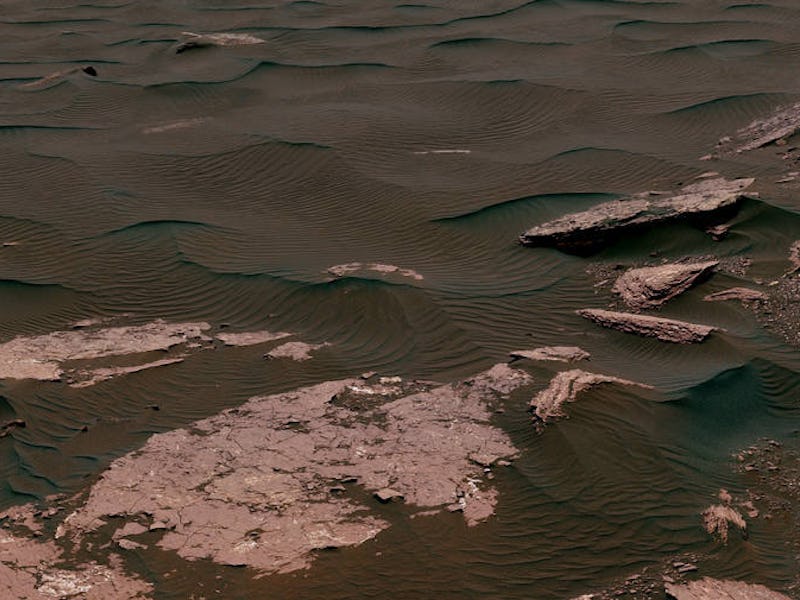
The Curiosity Rover is on an important geological mission in the Bagnold Dunes, collecting samples and climbing the tallest mountain on Mars’ Mount Sharp. NASA has compiled a breathtaking 360-degree video of the rover’s latest views of active linear dunes near the base of the mountain on the red planet.
The dune campaign, which Curiosity has been on since late 2015, is helping scientists understand how wind affects the planet.
Mars isn’t nearly as windy as Earth, mostly because it lacks a dense atmosphere. But, heat causes winds to rise and it’s enough to pick up the sand and push it around. So far, the campaign has turned up a lot of interesting data including footage of “dust devils,” which are small tornado-like wisps.
This view from the Mast Camera (Mastcam) on NASA’s Curiosity Mars rover shows two scales of ripples, plus other textures, in an area where the mission examined a linear-shaped dune in the Bagnold dune field on lower Mount Sharp in March and April 2017.
NASA’s goal with this campaign is to learn how Mount Sharp influences the wind and if the wind separates mineral deposits on the surface. In its first phase of the campaign, Curiosity examined crescent-shaped dunes, which didn’t seem to be affected much by the mountain. But, in the second phase, looking at active linear dunes, there are noticeable differences in composition.
Based off the new footage, NASA believes Mount Sharp is significantly contributing to the movement of the linear dunes, unlike the crescent dunes. This could be because the linear dunes are about a mile uphill; closer to the action, so to speak.
“At these linear dunes, the wind regime is more complicated than at the crescent dunes we studied earlier,” Mathieu Lapotre of Caltech, leading the Curiosity team, said in a release.
The linear dunes also change shape more frequently, especially during the high-wind season, and ripples can be seen cascading across the sand. But, there is still more work to do before scientists can fully understand what we are working with on the Red Planet. The rover’s next step will be to measure the strength of the wind and collect and analyze samples of the sand for their mineral composition.
Curiosity’s continued success is helping NASA plan future landings, which will one day contain humans in hopes of inhabiting the planet. So, one step closer for Curiosity is indeed one step closer for mankind.